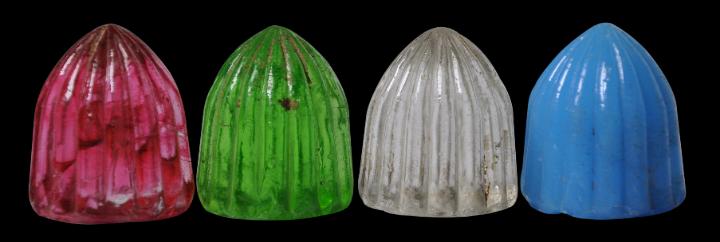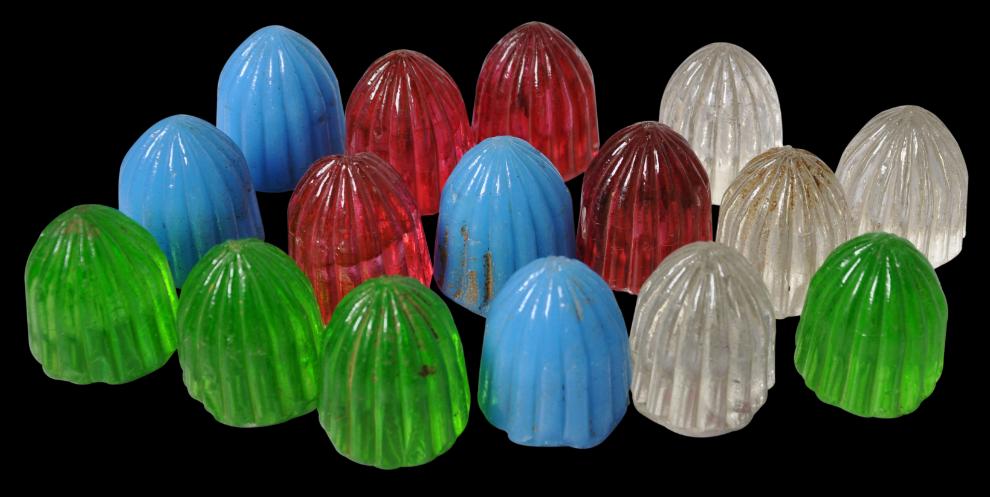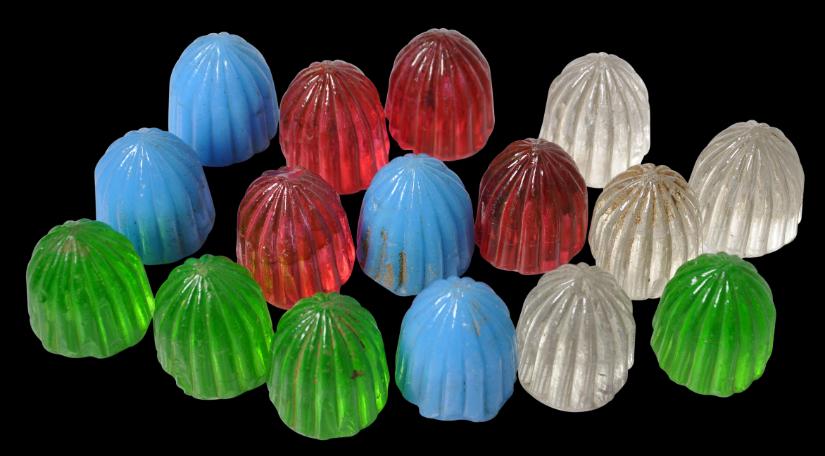
Glass Pachisi or Chaupar Set
Complete Glass Pachisi or Chaupar Set
Made for the Indian Market
19th century
height of each piece (approx.): 4cm
This colourful set of sixteen cast glass pachisi or chaupar counters (narads) was either made in India or made for the Indian market. Cast in clear, opaque blue, red and green glass, each counter is ribbed and domed and has a Mughal-esque architectural quality.
The set is complete; sixteen pieces are required for the game. The four colours are for each of the four players needed to play the game.
This type of game has many local names in India.
Pachisi in Hindi means ‘twenty-five’ which is the highest score that can be achieved by one throw of the dice. Chaupar reflects the four arms of the usual playing board or cloth. The game has a long history in India. Eighteenth century miniature paintings show various maharajas and their courtiers playing the game, although the history of the game in India stretches back well over a thousand years. For much of this time, the game was associated with courtly and aristocratic circles.
The game is played on a board that has four arms. The aim of the game is to start with the pieces on the outer part of each arm. Each player takes turns to throw dice and move his pieces towards the middle accordingly. The difficulty comes in the last few steps when the number thrown on the dice must match exactly the number of squares left before the middle is reached, with the winner being the first player to get all of his pieces into the centre at once.
Topsfield (2006, p. 70) illustrates an assortment of pachisi materials made from diverse materials. Included are several glass examples not unlike some of these here.
The pieces here have clear age and have clearly been extensively used: they are variously chipped and cracked but all are in a stable condition. They are sculptural and attractive, looking like small moulded jellies as they do, and are an interesting part of India’s social history.
References
Topsfield, A., (ed.), The Art of Play: Board and Card Games of India, Marg Publications, 2006.
Provenance:
UK art market
Inventory no.: 2905
SOLD




